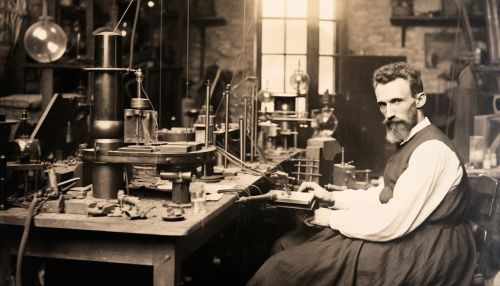Curie's Principle
Introduction
Curie's Principle, named after the French physicist Pierre Curie, is a fundamental concept in the field of symmetry in physics. The principle states that the symmetry of the effect must be contained in the cause. This means that the cause of a physical phenomenon must possess at least the symmetries of the effect.


Historical Background
Pierre Curie, born in 1859, was a renowned physicist known for his work on radioactivity and magnetism. He formulated Curie's Principle in the late 19th century, during his investigations into the properties of crystals and their symmetrical structures. The principle has since been applied in various fields of physics, including quantum mechanics, thermodynamics, and crystallography.
Explanation of Curie's Principle
Curie's Principle is based on the idea of symmetry, a fundamental concept in physics. Symmetry refers to a system's ability to remain unchanged under certain transformations, such as rotation or reflection. In the context of Curie's Principle, symmetry is related to the cause and effect relationship in physical phenomena.
The principle states that the cause of a physical phenomenon must have at least the same symmetry as the effect. This means that if an effect exhibits a certain symmetry, the cause of that effect must also exhibit that symmetry, if not more. For example, if a physical effect is observed to be symmetrical under rotation, then the cause of that effect must also be symmetrical under rotation.
Applications of Curie's Principle
Curie's Principle has wide-ranging applications in various fields of physics. Some of the notable applications are discussed below:
In Crystallography
In crystallography, Curie's Principle is used to explain the symmetrical properties of crystals. Crystals are known for their regular, repeating patterns, which exhibit certain symmetries. According to Curie's Principle, the forces that cause the formation of these patterns must also exhibit these symmetries.
In Quantum Mechanics
In quantum mechanics, Curie's Principle is used in the study of quantum symmetries. It helps in understanding the conservation laws related to various symmetries, such as the conservation of angular momentum, which is related to rotational symmetry.
In Thermodynamics
In thermodynamics, Curie's Principle is applied in the study of phase transitions. The principle helps in understanding how the symmetry of a system changes during a phase transition, such as the transition from a liquid to a solid state.
Implications of Curie's Principle
The implications of Curie's Principle are profound in the field of physics. The principle provides a fundamental link between the cause and effect in physical phenomena, based on the concept of symmetry. It helps in understanding the underlying mechanisms of various physical processes and phenomena.
Moreover, Curie's Principle also has philosophical implications. It suggests that the laws of nature are inherently symmetrical, and this symmetry is reflected in the physical phenomena that these laws govern.
